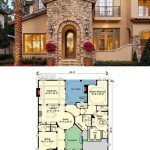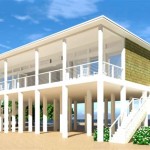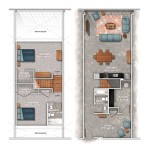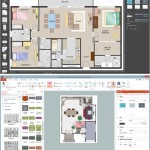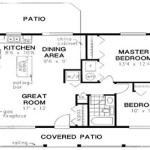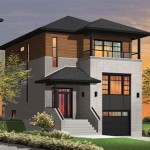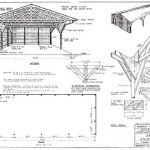Old Southern Style House Plans: A Timeless Architecture
Old Southern style house plans evoke a sense of history, grace, and enduring elegance. These architectural designs, deeply rooted in the cultural heritage of the American South, represent more than just shelter; they symbolize a way of life characterized by hospitality, tradition, and connection to the land. Understanding the key features, historical influences, and modern interpretations of these house plans is essential for anyone considering building or renovating a home in this distinguished style.
The term "Old Southern style" encompasses a range of architectural subtypes, each reflecting distinct periods and regional variations within the broader Southern context. Antebellum mansions, plantation homes, and coastal cottages all fall under this umbrella, sharing common threads while exhibiting unique characteristics. The enduring appeal of these designs lies in their ability to blend functionality with aesthetic beauty, creating homes that are both livable and visually striking.
Defining Characteristics of Old Southern Style Homes
Several defining features distinguish Old Southern style houses from other architectural forms. These characteristics are not merely decorative; they serve functional purposes, often adapted to the Southern climate and lifestyle. Key aspects include:
*Large Porches:
The porch is arguably the most iconic element of Southern architecture. Often expansive and wrapping around the house, porches provide shaded outdoor living spaces, perfect for enjoying the Southern climate and socializing with neighbors and guests. These porches are frequently adorned with columns, railings, and intricate trim work, adding to the visual appeal. The orientation of the porch is often carefully considered to maximize shade and capture prevailing breezes. Materials like wood, brick, or stone are commonly used for the porch flooring, chosen for their durability and aesthetic qualities. *Symmetrical Facades:
Symmetry is a hallmark of many Old Southern style homes, reflecting a sense of balance and order. The front facade typically features a central entrance flanked by windows and columns arranged in a symmetrical pattern. This emphasis on symmetry extends to the interior layout, with rooms often arranged around a central hallway or foyer. The use of symmetrical elements contributes to the overall feeling of harmony and elegance. *High Ceilings and Large Windows:
High ceilings are a practical feature designed to promote air circulation and keep the interior cool in the hot and humid Southern climate. Large windows, often reaching from floor to ceiling, allow for ample natural light and ventilation. These windows may be adorned with shutters, which provide additional protection from the sun and storms. The combination of high ceilings and large windows creates an airy and spacious interior, ideal for comfortable living. *Columns and Pilasters:
Columns are a quintessential element of Southern architecture, adding a touch of grandeur and sophistication to the exterior. These columns are often of the Greek or Roman order, such as Doric, Ionic, or Corinthian, reflecting the classical influences on Southern architecture. Pilasters, which are flattened columns attached to the wall, are also commonly used to add architectural detail. The use of columns and pilasters elevates the aesthetic appeal of the house and creates a sense of timeless elegance. *Formal Living Spaces:
Old Southern style homes typically feature formal living spaces, such as parlors and dining rooms, designed for entertaining guests and celebrating special occasions. These rooms are often adorned with elaborate detailing, such as crown molding, wainscoting, and decorative fireplaces. The formal living spaces reflect the Southern tradition of hospitality and gracious living.Beyond these core features, other characteristics may include raised foundations to protect against flooding, dormer windows to provide additional light and ventilation to upper floors, and intricate detailing such as decorative ironwork and ornate trim.
Historical Influences on Old Southern Style Architecture
The Old Southern style is not a monolithic entity but rather a product of diverse historical and cultural influences. Understanding these influences provides context for the evolution and variations within this architectural tradition.
*Classical Revival:
The Greek Revival and Roman Revival movements significantly shaped Southern architecture, particularly in the antebellum period. Plantation homes often incorporated classical elements such as columns, pediments, and symmetrical facades, reflecting the ideals of ancient Greece and Rome. This influence symbolized a connection to democracy, learning, and civic virtue. *Federal Style:
The Federal style, popular in the late 18th and early 19th centuries, contributed to the elegance and refinement of Southern architecture. Federal-style homes often feature elliptical fanlights above doorways, delicate moldings, and symmetrical layouts. This style emphasized balance, proportion, and restrained ornamentation. *French Colonial:
In regions like Louisiana and the Gulf Coast, French Colonial influences are evident in the architecture. These homes typically feature raised foundations, wide galleries, and steeply pitched roofs designed to withstand the region's climate. Elements like French doors and louvered shutters reflect the French cultural heritage of the area. *Caribbean Influences:
The proximity of the Caribbean islands influenced Southern architecture, particularly in coastal areas. Elements such as jalousie windows, designed to allow for ventilation while maintaining privacy, and bright, vibrant colors, reflect the Caribbean aesthetic. These influences added a unique and tropical flavor to Southern architecture.The interaction of these diverse influences resulted in a rich and varied architectural landscape across the South. Each region developed its own distinctive style, reflecting the local climate, materials, and cultural heritage. These variations contribute to the enduring appeal and charm of Old Southern style homes.
Modern Interpretations and Adaptations
While rooted in history, Old Southern style architecture continues to evolve and adapt to modern needs and tastes. Contemporary interpretations of these designs often incorporate modern amenities, energy-efficient features, and flexible floor plans while retaining the classic aesthetic. This allows homeowners to enjoy the charm and elegance of Southern architecture in a comfortable and sustainable way.
*Open Floor Plans:
Traditional Southern homes often featured separate rooms for different functions. Modern interpretations may incorporate open floor plans that connect the kitchen, living room, and dining area, creating a more spacious and social living environment. This adaptation reflects the modern lifestyle, where families often prefer to gather and interact in shared spaces. *Modern Kitchens and Bathrooms:
While maintaining the overall Southern aesthetic, modern Southern homes often feature updated kitchens and bathrooms with contemporary appliances, fixtures, and finishes. These spaces are designed for convenience, functionality, and style, reflecting the modern homeowner's desire for comfort and luxury. *Energy Efficiency:
Modern building techniques and materials allow for energy-efficient Old Southern style homes. Features such as energy-efficient windows, insulation, and HVAC systems can reduce energy consumption and lower utility bills. This allows homeowners to enjoy the beauty of Southern architecture while minimizing their environmental impact. *Universal Design Principles:
Incorporating universal design principles can make Old Southern style homes more accessible and adaptable for people of all ages and abilities. Features such as wider doorways, ramps, and grab bars can enhance the functionality and comfort of the home for residents and visitors with mobility issues.The enduring appeal of Old Southern style house plans stems from their ability to blend classic elegance with modern functionality. By understanding the historical influences, key characteristics, and modern adaptations of these designs, homeowners can create homes that are both beautiful and livable, reflecting the timeless charm of the American South. The adaptation of these styles demonstrates a continued appreciation for the architectural tradition, while catering the needs and expectations of the modern homeowner.

This Classic Cottage Is Our New Favorite House Plan Southern Plans Living

House Plan 73602 Southern Style With 1867 Sq Ft 3 Bed 2 Bath

5 Bedrm 7433 Sq Ft Southern Plantation House Plan 153 1187

Pin On Houses

Plan 73733 Southern Style With 4 Bed Bath

5 Bedrm 7433 Sq Ft Southern Plantation House Plan 153 1187

House Plan 73702 Southern Style With 3653 Sq Ft 5 Bed 4 Bath

Plan No 3031 From Southern Pine Homes House Plans With S Vintage 1920s

House Plan 86114 Southern Style With 2568 Sq Ft 3 Bed Bath

Farmhouse Style Annual 2024 Coastal Living House Plans

